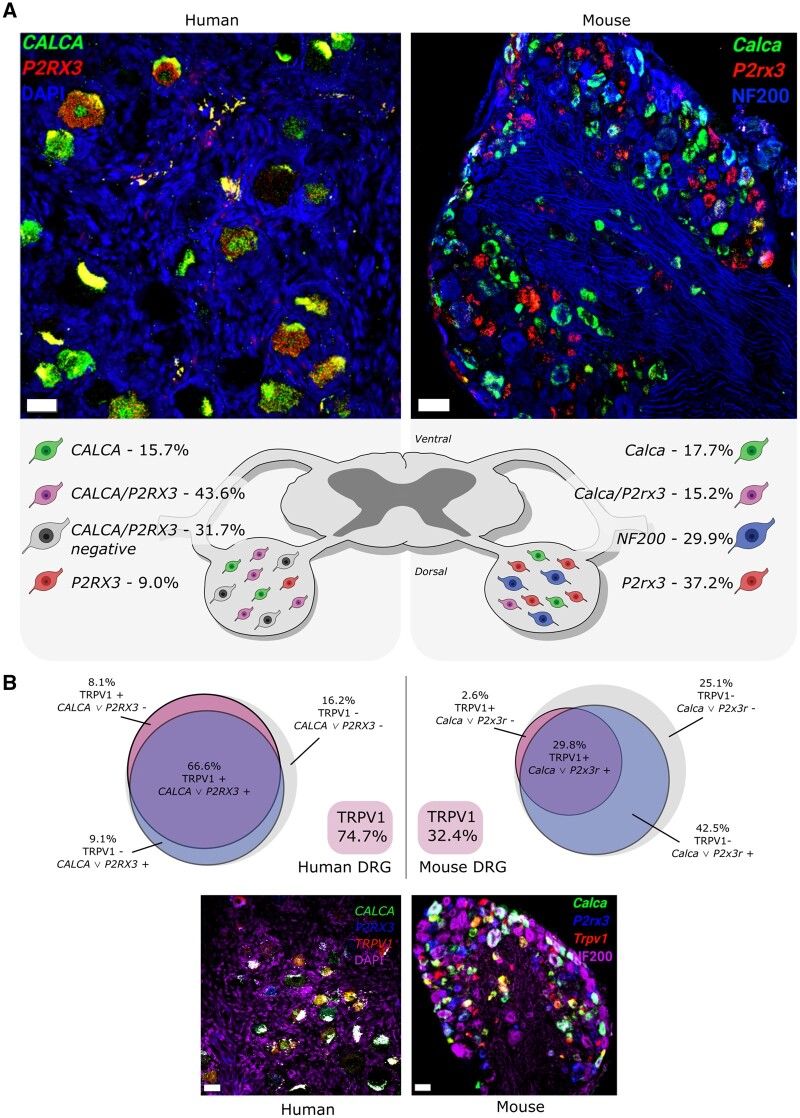Figure 2.
Classic sensory neuron subpopulations are different between mouse and human DRG. (A) Mouse and human DRG labelled (at ×20) with RNAscope in situ hybridization for CALCA (CGRP; green) and P2RX3 (P2X3R; red) mRNA. Mouse and human DRGs were co-stained for NF200 protein (blue) and DAPI (blue), respectively. Human DRG had a large population of CALCA/P2RX3 co-expressing neurons (43.6%) that was much smaller in mouse (15.2%). This was due to more CALCA being found in human DRG than mouse. These data indicate that the peptidergic (CGRP-positive) and non-peptidergic (P2X3R-positive) neuronal subclasses are not separate entities in human DRG and support that the mouse and human nociceptor phenotypes may be divergent. (B) Mouse and human DRG (at ×20) labelled with RNAscope in situ hybridization for CALCA (CGRP; green), P2RX3 (P2X3R; blue) and TRPV1 (TRPV1; red) mRNA. Mouse and human DRGs were co-stained for NF200 protein (purple) and DAPI (purple), respectively. Trpv1 is expressed in a small percentage of neurons (32.4%) in mouse DRG, most of which are Calca and/or P2rx3 positive (29.8%). However, in human DRG, TRPV1 is expressed in a much larger population (74.7%), the majority of which are positive for CALCA and/or P2RX3. Data shown are summarized from Shiers et al.56 Scale bar = 50 μm.

